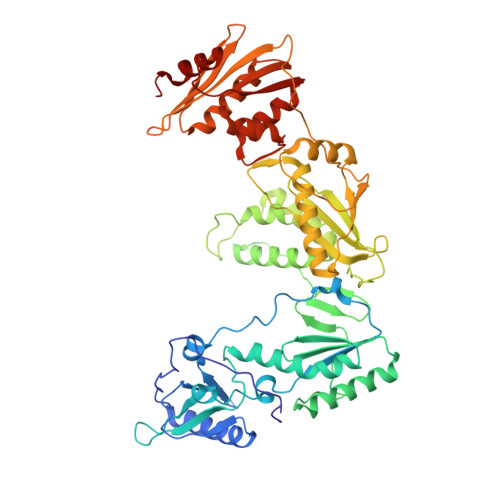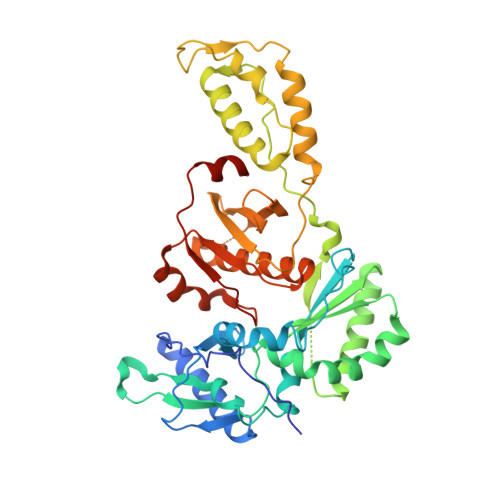Structural basis for the inhibition of RNase H activity of HIV-1 reverse transcriptase by RNase H active site-directed inhibitors.
Su, H.P., Yan, Y., Prasad, G.S., Smith, R.F., Daniels, C.L., Abeywickrema, P.D., Reid, J.C., Loughran, H.M., Kornienko, M., Sharma, S., Grobler, J.A., Xu, B., Sardana, V., Allison, T.J., Williams, P.D., Darke, P.L., Hazuda, D.J., Munshi, S.(2010) J Virol 84: 7625-7633
- PubMed: 20484498
- DOI: https://doi.org/10.1128/JVI.00353-10
- Primary Citation of Related Structures:
3LP0, 3LP1, 3LP2, 3LP3 - PubMed Abstract:
HIV/AIDS continues to be a menace to public health. Several drugs currently on the market have successfully improved the ability to manage the viral burden in infected patients. However, new drugs are needed to combat the rapid emergence of mutated forms of the virus that are resistant to existing therapies. Currently, approved drugs target three of the four major enzyme activities encoded by the virus that are critical to the HIV life cycle. Although a number of inhibitors of HIV RNase H activity have been reported, few inhibit by directly engaging the RNase H active site. Here, we describe structures of naphthyridinone-containing inhibitors bound to the RNase H active site. This class of compounds binds to the active site via two metal ions that are coordinated by catalytic site residues, D443, E478, D498, and D549. The directionality of the naphthyridinone pharmacophore is restricted by the ordering of D549 and H539 in the RNase H domain. In addition, one of the naphthyridinone-based compounds was found to bind at a second site close to the polymerase active site and non-nucleoside/nucleotide inhibitor sites in a metal-independent manner. Further characterization, using fluorescence-based thermal denaturation and a crystal structure of the isolated RNase H domain reveals that this compound can also bind the RNase H site and retains the metal-dependent binding mode of this class of molecules. These structures provide a means for structurally guided design of novel RNase H inhibitors.
Organizational Affiliation:
Department of Global Structural Biology, Merck Research Laboratories, West Point, Pennsylvania 19486, USA. [email protected]


















